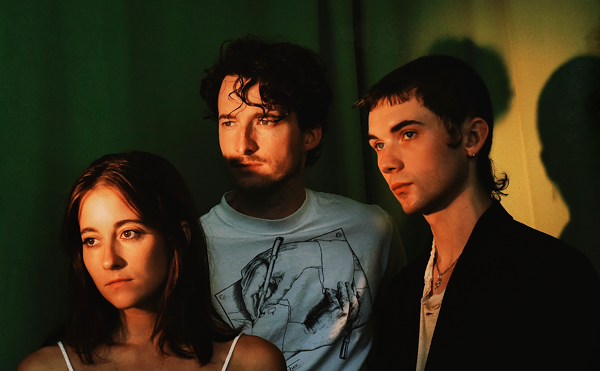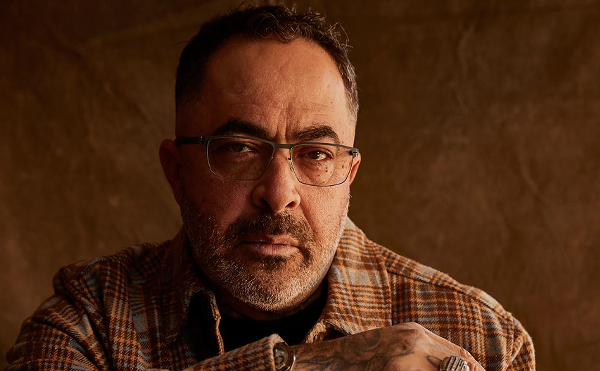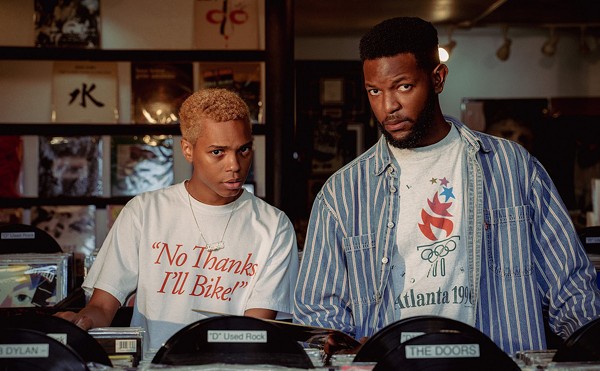Greendale
NEIL YOUNG & CRAZY HORSE
Reprise
Neil Young pissed off more than a few folks this year when he launched an arena tour and played an as-yet-unreleased album front to back. Now the disc in question is out. Greendale is an ambitious project from a venerable artist who pretty much does whatever the hell he wants. It is not, however, entirely successful.
You could call Greendale a musical novella. It tells the story of the extended Green family who live in and around fictional Greendale on the northern California coast. Shit happens: A cop-killing, grandpa dies of a heart attack, a frisky 19-year-old girl flies the coop. Amid the narrative, Young comments on the environment, corporate greed, media invasiveness, family dynamics, bad decisions, grief and loss. Greendale resonates with tragedy, anger and sly humor.
I downloaded the lyrics off neilyoung.com, printed them out and sat through the entire album without interruption. Enjoyed it immensely. But I'm not apt to do it again any time soon. Which leads me to the problems with Greendale. As stand-alone songs, they leave quite a bit to be desired. It's as if Young did not want melodies to detract from the stories. They're simple, repetitive and often sound alike from tune to tune. Most of the rhythms are straight, mid-tempo rock, and at times they can sound downright sluggish.
Young dialed down Crazy Horse's thick, agro attack into something more laconic and flowing. Most of the tracks include Young on guitar backed by Crazy Horse drummer Ralph Molina and bassist Bill Talbot. The production has a garage-y, warts-and-all quality. Young's ragged guitar tone is still on display, but the solos are more contemplative than fiery; at times they're even nondescript. Again, it seems as if Young took this subdued approach on purpose to accentuate the storytelling.
In time, some of the songs — especially the churning "Devil's Sidewalk," the acoustic ballad "Bandit" and the almost-anthemic "Be The Rain" — are likely to make a deeper imprint. I probably won't give Greendale that much of a chance, but Neil Young diehards who stick with the disc will surely find their rewards.
Greendale includes a bonus DVD of Young performing the songs in a solo acoustic setting. 

 —Eric Snider
—Eric Snider
Leona Naess
LEONA NAESS
MCA
At first, it's easy to discount Leona Naess. After all, she grew up the daughter of a millionaire Norwegian shipping magnate (the former Mr. Diana Ross), studied music at NYU and developed a personal fondness for troubled rockers such as Ryan Adams. The details of her charmed upbringing are even more relevant when listening to Leona Naess, her third studio album and follow up to 2001's brilliant I Tried to Rock You But You Would Only Roll. Her influences, mostly from the traditional singer/songwriters of the 1960s, are obvious but well informed, with a world-weariness that sounds more sincere than affected. Hints of Joni Mitchell, Neil Young and Elton John find their way into each track, but Naess' vocals, surefooted and effortless, shine through indelibly. Her diary-like lyrics can sound overly simplistic, like unsuccessful efforts to transcend the privileged bohemian aesthetic. She rarely hides behind quizzical metaphors or grandiose summaries, opting for bluntness over abstraction. Ethan Johns — who has produced albums by Adams, Counting Crows and Rufus Wainwright — adds unexpected touches of strings and xylophones, delightfully complicating the mix. These sonic conceits help to distance Naess from the lot of coffeehouse poets and inevitable Edie Brickell comparisons. And although acoustic guitars and vocals drive each track, this self-titled album is more than the sum of its parts: Leona Naess is an unconventional pop album, acknowledging folk, soul and rock influences, but devoting itself entirely to none of them. 

 —Mark Sanders
—Mark Sanders
A Lethal Dose of American Hatred
SUPERJOINT RITUAL
Sanctuary Records
No one can accuse Phil Anselmo of selling out. The enigmatic, extroverted frontman has seen metal's popularity ebb and flow, from his humble beginnings in hair metal (I swear, look it up) to Pantera's mid-'90s golden age, and finally to the absolute mayhem that is Superjoint Ritual. And he is still rocking, now well past his supposed prime, without a hint of mellowing. On this outing he's brought along musicians from other noteworthy mosh pit instigators like Corrosion of Conformity, Down, Eyehategod and Hank Williams III — the same lanky-ass Hank III seen on Good Morning America a couple of years ago singing "Hey Good Lookin'." A Lethal Dose of American Hatred succeeds in re-creating Black Flag-era punk combined with Anselmo's unmistakably guttural vocal delivery and torturous riffage. Anselmo purges himself of his demons, referencing politics (hence the album's title), self-loathing, drugs and religion. The intensity hardly wanes throughout, beginning and ending with amps turned up to 11 and nary a hint of dynamics in-between. A Lethal Dose... proves that these guys can grow up and still remain relevant. May the sludgefest last forever. 

 1/2—Mark Sanders
1/2—Mark Sanders
Solo Monk
THELONIOUS MONK
Columbia/Legacy
By the mid '60s, when these solo piano recordings were cut, bebop pioneer Thelonious Monk was no longer considered hip or cutting-edge. The original issue of Solo Monk was largely overlooked or critically derided. Nearly four decades later, we have the benefit of hindsight. The music is timeless. Crisply remastered, the 12 songs on the original LP, along with nine bonus alternate takes, neatly capture Monk's idiosyncratic harmonies and rhythmic sense. The music ranges from whimsy to melancholy, from the stride-influenced "Dinah" (popularized by Fats Waller in the '20s) and "I'm Confessin' (That I Love You)," to probing takes on originals "Ask Me Now" and "Ruby, My Dear." Monk's playing was a sublime synthesis of traditional, modern and highly individualistic. What better way to experience it than with the master alone at the piano. 



 —Eric Snider
—Eric Snider
Fanfare in the Garden: An Essential Logic Collection
LARA LOGIC
Kill Rock Stars
Pioneering punk Lara Logic's recording career may have been brief, but she still managed to leave behind a signature sound. Logic's socially conscious punk rock is characterized by her bluesy saxophone riffs that intermingle with her theatrical vocals (a mix of Nico and Deborah Harry). The collection begins with Logic's band in the late '70s, Essential Logic. The collection's high points are found here: "Collecting Dust," "Albert" and "Popcorn Boy." Following the band's break up, Logic's collaboration in the early "80s with Red Crayola and her solo releases found her more experimental, but she failed to match the energy of the Essential Logic days. Quality material does exist on Fanfare in the Garden, but it's a matter of sifting through the 35-track, two-disc collection to find it. 
 1/2—Chris Berger
1/2—Chris Berger
















